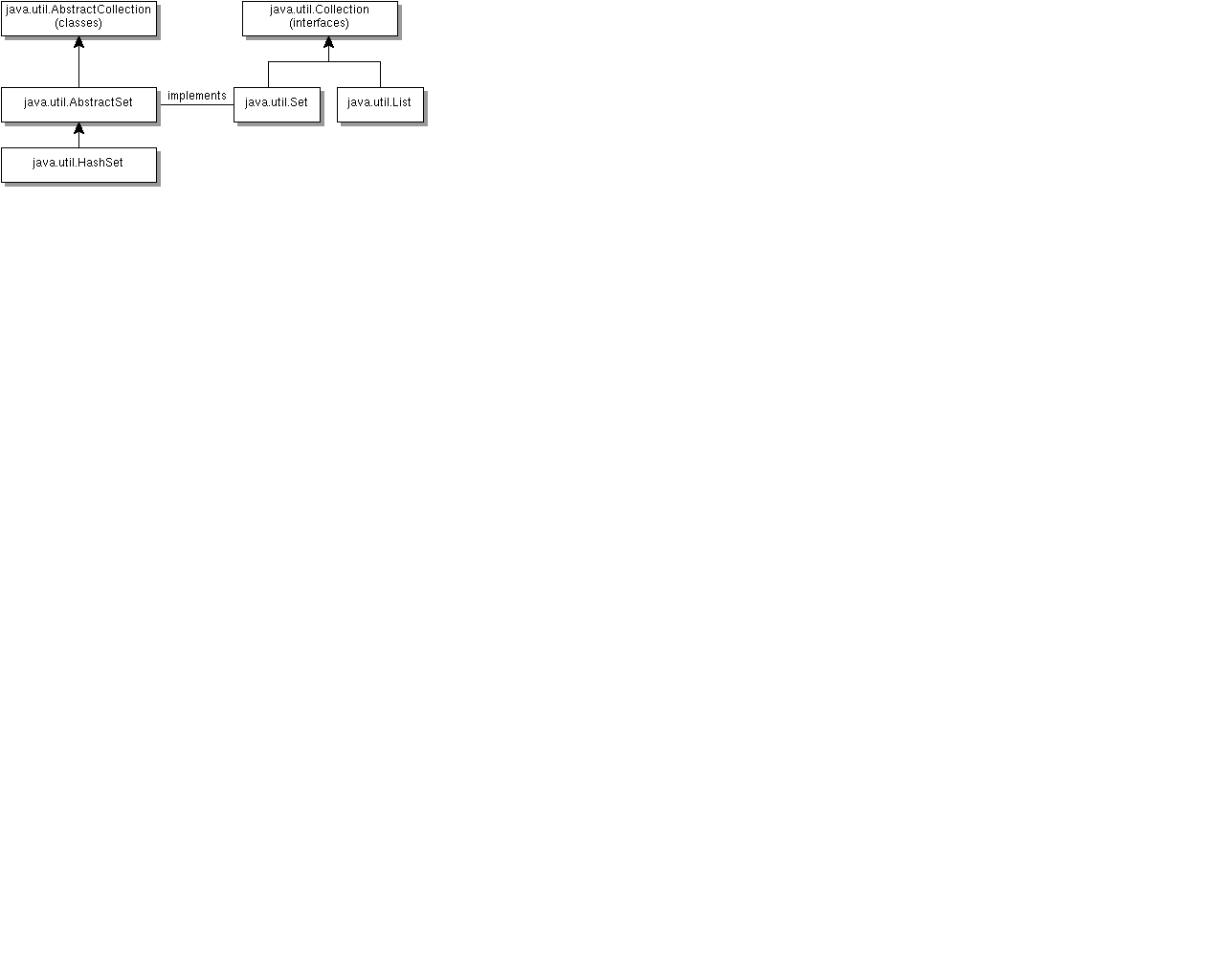A collection is an object that contains other objects
and provides methods for working on the objects it contains. A collection
can consist of the same types
of objects, but can contain objects of different types
too.
This lesson adapts the
RMIClient2 program
from Part 2, Lesson 2: User Interfaces Revisited to use
the Collections application programming interface (API) to
maintain and print a list of unique customer IDs.
The customer IDs are all objects of type String and
represent the same type
of information, a customer ID. You could, however, have a collection
object that contains objects of type String, Integer,
and Double if it makes sense in your application.
About Collections
The Collection classes available to use in
programs implement Collection interfaces. Interfaces are abstract
data types that let collections be manipulated independently of
their representation details. There are three primary types of
collection interfaces: List, Set, and
Map. This lesson focuses on the List and
Set collections.
Set implementations do not permit duplicate elements, but
List implementations do. Duplicate elements have the same
data type and value.
For example, two customer IDs of type String containing the
value Zelda are duplicate; whereas, an element of type
String containing the value 1 and
an element of type Integer containing the
value 1 are not duplicate.
The API provides two general-purpose Set
implementations. HashSet, which stores its elements in a
hash table, and TreeSet, which stores its elements in
a balanced binary tree called a red-black tree.
The example for this lesson
uses the HashSet implementation because it
currently has the best performance.
This diagram shows the Collection interfaces on the right and
the class hierarchy for the java.util.HashSet on
the left. You can see that the HashSet class implements
the Set interface.

Creating a Set
This example adapts the
RMIClient2.java
class to collect customer IDs in a Set and print
the list of customer IDs whenever the View button
is clicked.
The collection object is a Set so if the same customer
enters multiple orders, there is only one element for that customer
in the list of customer IDs. If the program tries to add an element that is
the same as an element already in the set, the second element
is simply not added. No error is thrown and there is nothing
you have to do in your code.
The RMIClient2.actionPerformed
method calls the addCustomer method to add a customer ID
to the set when the order processor clicks the View button.
The addCustomer method shown below adds the customer ID
to the set and prints a notice that the customer ID has been added.
//Create list of customer IDs
public void addCustomer(String custID){
s.add(custID);
System.out.println("Customer ID added");
}
Printing
The print method is called from the
RMIClient2.actionPerformed
method when the order processor clicks the View
button. The print method prints the elements
currently in the set to the command line.
Note:
A HashSet does not guarantee the order of the elements
in the set. Elements are printed in the order they occur in the set,
but that order is not necessarily the same as the order in which the
elements were placed in the set.
To traverse the set, an object of type Iterator is
returned from the set. The Iterator object has
a hasNext method that lets you test if there is another
element in the set, a next that lets you move over the
elements in the set, and a remove method that lets you remove
an element.
The example print method shows two ways to print the set. The first
way uses an iterator and the second way simply calls System.out.println
on the set. In the iterator approach, the element returned by the
next method is printed to the command line until there are no more
elements in the set.
//Print customer IDs
public void print(){
//Iterator approach
if(s.size()!=0){
Iterator it = s.iterator();
while(it.hasNext()){
System.out.println(it.next());
}
//Call System.out.println on the set
System.out.println(s);
}else{
System.out.println("No customer IDs available");
}
}
More Information
You can find more information on Collections in the
Collections trail in
The JavaTM Tutorial.
[TOP]

